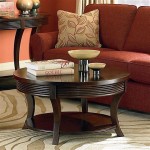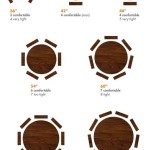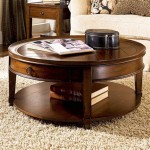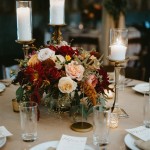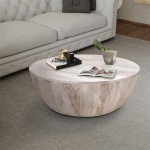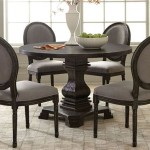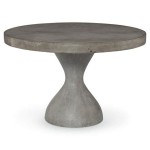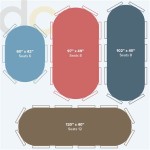How to Set a Table with a Runner
Setting a table, whether for a casual brunch or a formal dinner, elevates the dining experience. While numerous guides detail traditional place settings, incorporating a table runner adds a layer of sophistication and visual appeal. This article outlines the proper methods for setting a table using a runner, considering various levels of formality and offering guidance on appropriate linen selection and placement.
A table runner, typically a long, narrow piece of fabric, serves both decorative and functional purposes. It can protect the table surface, define individual place settings, and introduce color and texture to the overall tablescape. Understanding how to integrate a runner into the setting is crucial for achieving a polished and aesthetically pleasing presentation.
Choosing the Right Table Runner
Selecting the appropriate table runner is the first step in creating a visually harmonious table setting. Considerations include size, material, color, and style. These elements should complement the table itself, the dinnerware, and the overall ambiance of the meal.
The size of the table runner should be proportionate to the table. A runner that is too short will appear insignificant, while one that is too long can be cumbersome and detract from the setting. A general rule of thumb is to allow the runner to hang down approximately 6-12 inches on each end. This provides an elegant drape without obstructing movement around the table. For tables of standard length, runners typically range from 72 to 108 inches long.
The material of the table runner impacts both its aesthetic appeal and its practicality. Linen runners offer a classic, understated elegance, suitable for both formal and informal occasions. Cotton runners are more casual and easy to care for, making them ideal for everyday use. Silk runners provide a luxurious touch, perfect for special events and formal dinners. Synthetic materials, such as polyester, offer durability and stain resistance, making them a practical choice for families with young children or for outdoor dining situations.
Color and pattern selection should complement the existing décor and the theme of the meal. Neutral colors, such as white, beige, and gray, provide a versatile backdrop for various dinnerware and centerpiece arrangements. Bold colors and patterns can add a pop of personality and visual interest, but should be used judiciously to avoid overwhelming the table setting. Consider coordinating the runner's color with the napkins, placemats, or centerpiece for a cohesive look.
The style of the table runner should align with the overall formality of the occasion. For casual gatherings, a simple cotton runner with a subtle pattern is appropriate. For formal dinners, a linen or silk runner with intricate detailing, such as embroidery or lace, enhances the elegance of the setting. The runner's style should also complement the style of the dinnerware. For example, a rustic runner pairs well with earthenware dishes, while a modern runner complements sleek, contemporary dinnerware.
Placement Options for Table Runners
Table runners can be placed in several different ways, each offering a unique aesthetic. The most common placement options include lengthwise down the center of the table, crosswise across the table, or in multiple parallel runners. The choice depends on the table shape, the number of guests, and the desired visual effect.
The traditional lengthwise placement involves positioning the runner centrally along the length of the table. This method works well for both rectangular and oval tables. The runner can either be placed directly on the bare table or over a tablecloth. When using a tablecloth, ensure the runner contrasts with the tablecloth in color or texture to create visual interest. The runner should be centered so that the overhang is equal on both ends. This placement is suitable for both casual and formal settings, providing a defined space for centerpieces and serving dishes.
Crosswise placement involves positioning the runner across the width of the table, creating individual place settings. This method is particularly effective for rectangular or square tables when setting a table for a smaller number of guests. Each runner acts as a placemat, providing a designated area for the dinnerware, cutlery, and glassware. The runners should be evenly spaced and aligned with the chairs. This placement adds a modern and personalized touch to the table setting, offering an alternative to traditional placemats.
Multiple parallel runners involve using two or more runners placed parallel to each other along the length of the table. This method is often used for larger tables or when creating a more elaborate tablescape. The runners can be the same color and pattern or can be coordinated to create a layered effect. This placement allows for greater flexibility in arranging centerpieces and serving dishes, creating a visually rich and dynamic table setting. Ensure the spacing between the runners is consistent and that the runners are aligned for a polished look.
Integrating the Table Runner with Dinnerware and Accessories
Once the table runner is chosen and placed, the next step is to integrate it with the dinnerware, cutlery, glassware, and other accessories. The placement of these items should be both functional and aesthetically pleasing, creating a balanced and harmonious table setting.
The placement of dinnerware depends on the formality of the meal. For a casual setting, a simple place setting consisting of a dinner plate, fork, knife, and spoon is sufficient. The dinner plate should be centered on the runner or placemat. The fork is placed to the left of the plate, the knife to the right with the blade facing the plate, and the spoon to the right of the knife. The napkin can be placed to the left of the fork, on the plate, or in a napkin ring. For a formal setting, additional plates, such as a salad plate and a soup bowl, may be added. The salad plate is placed on top of the dinner plate, and the soup bowl is placed on the salad plate. Additional cutlery, such as a salad fork and a soup spoon, are placed according to the order in which they will be used, working from the outside in.
Glassware is typically placed to the upper right of the dinner plate. The water glass is placed closest to the plate, followed by the wine glass or glasses. The number of glasses depends on the beverages being served. For a formal dinner, there may be separate glasses for red wine, white wine, and champagne. Ensure the glasses are clean and polished to avoid detracting from the overall presentation.
Centerpieces and other decorative items should complement the table runner and dinnerware. A centerpiece can be placed in the center of the runner to create a focal point. The size and style of the centerpiece should be proportionate to the table and should not obstruct the view of the guests. Candles, flowers, and decorative objects can be used to add visual interest and create a warm and inviting atmosphere. Consider using elements that echo the colors and textures of the table runner to create a cohesive look.
Napkins can be folded in various ways to add a touch of elegance to the table setting. Simple folds, such as a rectangle or a triangle, are suitable for casual settings. More elaborate folds, such as a fan or a pocket fold, are appropriate for formal dinners. Napkin rings can also be used to add a decorative touch. The napkin should be placed either to the left of the fork or on the dinner plate.
By carefully considering the size, material, color, and placement of the table runner, as well as its integration with the dinnerware and accessories, one can create a visually appealing and functional table setting that enhances the dining experience.

5 Ways To Decorate A Table With Runner Pottery Barn

5 Ways To Decorate A Table With Runner Pottery Barn

How To Use Table Runners At Home House Garden

5 Ways To Use A Table Runner Stylemutt Home

13 Modern Ways To Use Table Runners Urquid Linen

How To Use Table Runners 8 Helpful Tips Hunker Dinner Party Settings Outdoor Dining
How To Set A Table Homegoods Photoshoot Reveal Four Generations One Roof Blog
:max_bytes(150000):strip_icc()/ScreenShot2022-12-16at7.30.55AM-c801f14142fb4ba79b9648ef3a568fcf.png?strip=all)
How To Decorate With Table Runners
:max_bytes(150000):strip_icc()/LaurkenKendall-75139881cf104a3ebbdd3a0c5c3efa8a.jpeg?strip=all)
25 Eye Catching Table Runner Ideas For Your Wedding Reception

How To Make A Table Runner 3 Easy Diy Runners Treasurie
Related Posts

